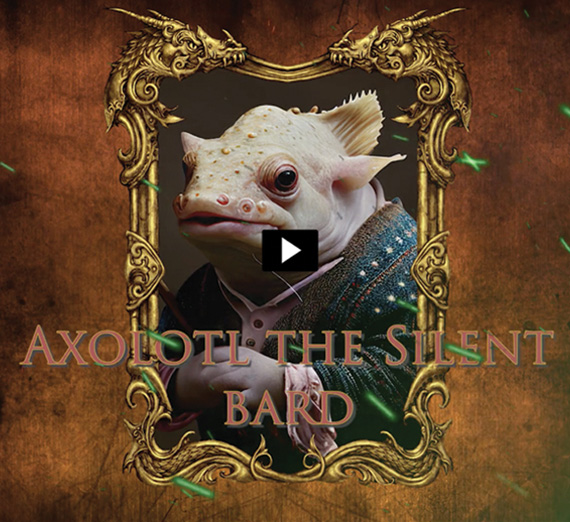Creating a Game-Based Online Class

One of the things that I like the most about the field of instructional design is the opportunity to think about that hard to quantify meta-level where you are teaching someone how to teach someone else. The most effective way to do this is to have your learner live the experience that you are trying to have them learn to craft. Unfortunately, the medium of a blog post does not permit me to teach you how to create a game-based curriculum by experiencing it. This adds a layer of complexity to my task, but one that is not insurmountable. It is my hope that you can follow these easy steps to design and implement your own game-based class in the near future.
Step 1: Define your Objectives
This is exactly the same process you should undertake at the beginning of planning for any class. Make a list of all of the objectives you would like your students to reach during the course. These should include:
- Content knowledge objectives
- Discipline-specific knowledge
- Discipline-specific technical skills
- Other technical skills (technology skills)
- Other academic skills
Be as specific and detailed as possible in your objectives. You may find that after you’ve listed them all, some can be combined of discarded as redundant. Penn State University provides an excellent resource page to help guide you in the actual writing of learning objectives. Keep these objectives in mind as you continue with the process, as you will need to refer to them to choose activities that help your students meet them.
Step 2: Brainstorm Game-based Ideas
This may best be accomplished with a colleague, student, or other thoughtful confidant. As with any brainstorming activity, nothing is out of bounds in this stage. Do not let budgetary constraints, technical constraints, or even outright insanity curtail your thinking. You may want or need to do some online research to see what is available and what the possibilities are related to your specific discipline. Remember that you do not need to focus strictly on computer games. Board games, role playing games, dice games, and other types of games have been played for thousands of years with great success. One resource site with a wide variety of learning game information is Thiagi.com. These ideas are free to use and you should take advantage of them. Use them as they are or modify to suit your needs.
Step 3: Confront Reality
The painful part of any curricular design project is in determining what you can actually do compared to what you ideally want to do. There are two scenarios in which this process becomes very easy: if you have an unlimited budget, or if you have no budget. Given the financial reality that most of us in education operate under, I’ll assume that no budget is closer to your reality. If your budget is $000.00, then you can automatically discard any ideas which require you to purchase anything or hire someone to produce it for you. That leaves you with the free options, and fortunately, there are millions of them available online. Making a list using Excel or Access is one way to collect all of the possibilities and weigh their advantages and limitations including:
- Cost
- Hardware/software compatibility
- Learner technical skills
- Institutional constraints
- Fit with your objectives
If you have compiled an effective list of possible gaming resources that help your students reach the objectives of your class, you are well on your way to creating a new and innovative learning experience for your students. At the very least, you can begin incorporating some of these elements as soon as possible to test out how the students respond and how effective they are at reaching your goals. That may be as far as you ever get, but if you’d like to move on toward completion, continue reading below.
Step 4: Design and Develop the Course
If this is a re-invention of an existing course, you probably already have an outline of the way the class works. Base your new design on this as it should already have a well-thought-out progression of how your students develop knowledge in the class. Creating a game-based class isn’t any different than designing a traditional one. Align your objectives with an appropriate activity (game) that will help your students gain an intuitive understanding of the subject matter. Make this clear to your students by outlining the things they should be looking for and what they will learn by playing the game. Follow up on the play with a directed discussion in which you explain why the game was used, what they should have noticed, and what the learning takeaways from the game play should be. Designing these discussions during the lesson planning phase will help you determine how the course elements align to your objectives and to each other. Continue building your course in this way until you have incorporated as much gaming as fits the time frame of the class and is appropriate to covering the objectives. Note: There is often a learning curve that must be overcome in game play, be prepared (and plan) to offer instruction on how to play the game, in conjunction with your mini-lesson explaining why the learners are playing the game.
This is the phase of the project where you may also decide that having your students design, create, and share their own games would be an effective way to learn the subject material. Creating a game is not terribly hard (it does not have to be a 3D animated computer game), look to materials from Quest2Learn and Jane McGonigal’s World Without Oil for inspiration. For classes where projects could involve digital storytelling consider using Microsoft’s free game development lab, Kodu.
Step 5: Usability Test
This stage of the development process has been ongoing throughout the previous steps as you tested and evaluated games during the planning and design stages. Now is the time to formalize the process by inviting some potential users to test drive the resources and your lessons. For full details on how to conduct an informal usability test of your curricular design, see the post Usability Testing in Online Course Design.
Gather as much feedback on the experience from your test subjects as possible and return to the planning and design stages as needed to tweak your course. Course design is an iterative process, so you will want to revisit your plan after each time you teach the class to see if things need to be adjusted, dropped, or added.
Step 6: Looking for Inspiration
Still not convinced, or uncertain if there are games that fit your subject area? Here are some excellent resources for determining not only what is currently available, but also how others are using game-based learning in their classes.
- Games for Change – This organization and the associated listserve are an excellent source of ideas and provide a window into seeing what is available. Feel free to ask questions of the group if you are looking for a game that fulfills a specific need.
- New Learning Institute – While this organization is primarily focused on public education, they are still a valuable source of information regarding how games and technology are actually being used to teach.
- Social Gaming and Education – This Mashable page features a collection of resources for those interested in using social gaming in education.
- 5 Gaming Tips for Professors - This Chronicle article makes five suggestions for things that instructors can learn from gaming. Turn it around and think of these things as something you should strive to incorporate into your game-based curriculum.
- Location-Based Gaming - Valuable information for those interested in using location-based gaming in the classroom.
- Institute for the Future – A collection of blogs and articles about using technology and games in the classroom.
There really is an enormous world of games and game development resources available at your fingertips on the Web. Reaching out and selecting a few to add to your existing courses is one way to move your teaching ahead of the curve, engage, and inspire your students, while giving your voice a rest. Developing an entire game-based curriculum is just a matter of replacing a majority of your materials with game-related resources and allowing your students to play their way through fulfilling the course objectives.
- Academics
- Online Programs
- School of Education
- School of Leadership Studies
- Foley Library




